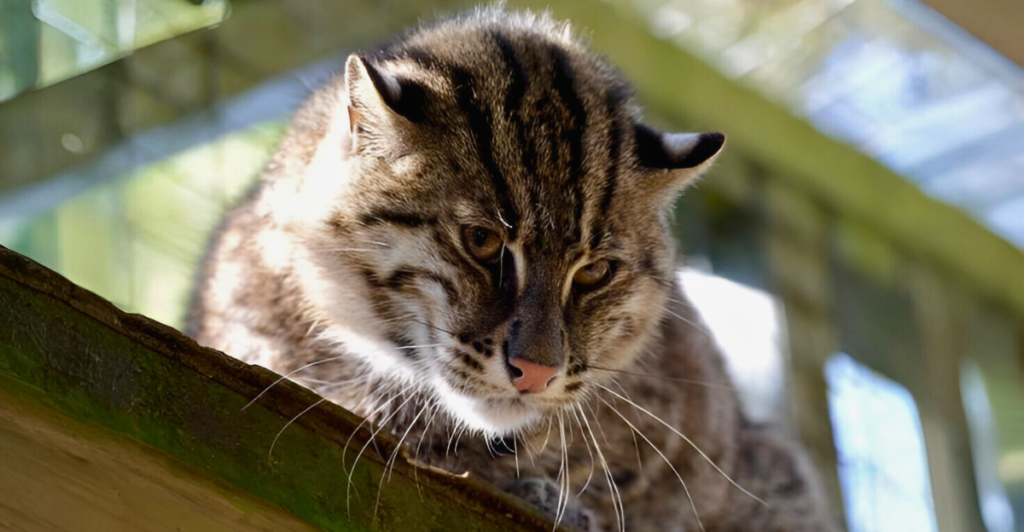
Cats are amazing domestic pets that everyone can agree are cute and cuddly, but many forget their heritage as wild animals. There are many wild cat species around the planet that, while they may look like domestic cats, have different behaviors and traits.
Don’t let the appearance of these cats fool you. These animals are wild animals that are 100 times more ferocious than domestic cats. While they are dangerous, admiring them from a distance can be a fulfilling endeavor. Cases of mistaken identity are common, with a lot of these cats having similar weight, size, and appearance.
Here are some of the lesser-known wildcats that could easily pass for a housecat to the untrained eyes. They highlight our world’s incredible biodiversity and remind us that animals may evolve independently, but many have common ancestry.
Margay
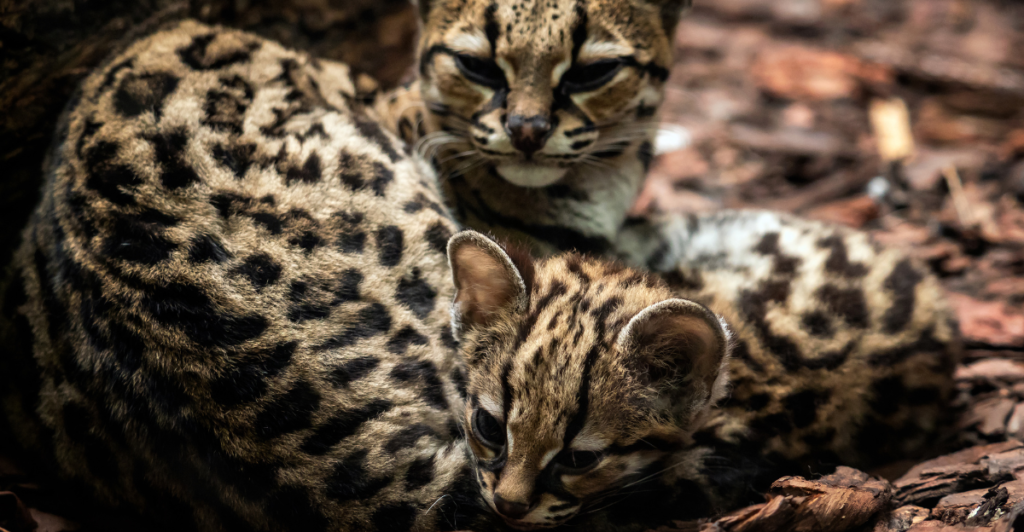
The Margay is a wild tree-dwelling cat that has enormous eyes and a beige coat. They dwell in the forests of Central and South America and have exceptional agility when it comes to climbing. They have been seen running up and down trees similarly to how squirrels do. This is a rare behavior for cats, which makes them the kings of climbing.
These wild cats are nocturnal hunters in their environment and prefer to live solitary lives. They like to live in the canopy of rainforests in South America. These small animals, typically weighing around 6-9 pounds, have small features, making them easily mistaken for domestic cats.
Margays typically feed on small mammals, birds, and insects that they can find in the rainforest. Unfortunately, habitat destruction has made them a vulnerable species.
Fishing Cat
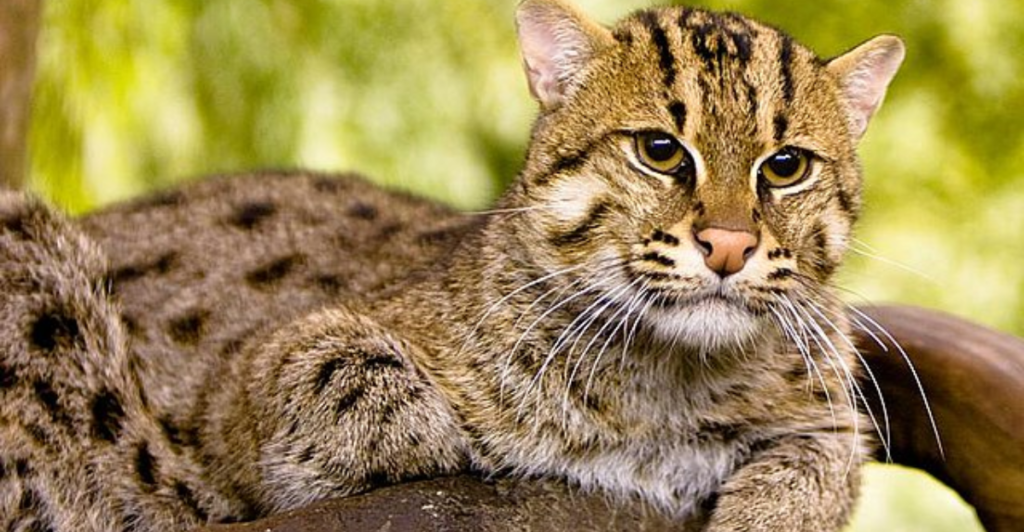
Wetlands and groves in South and Southeast Asia are home to the fishing cat. These wild cats have stocky legs, which they use to adeptly swim through the waters with ease. They have olive-gray fur with spots and stripes. This can give them a somewhat tabby appearance to the untrained eye.
They use their powerful muscles to dive into the water and hunt aquatic animals like fish, crabs, and frogs. These animals are masters of their environment, yet they are facing increasing risks of habitat destruction and pollution in the rainforests they dwell in.
Founder and director of the Small Wild Cat Conservation Foundation, Dr. Jim Sanderson, noted, “Fishing cats are a reminder of how interconnected ecosystems are—they depend on healthy wetlands to survive.”
Andean Mountain Cat
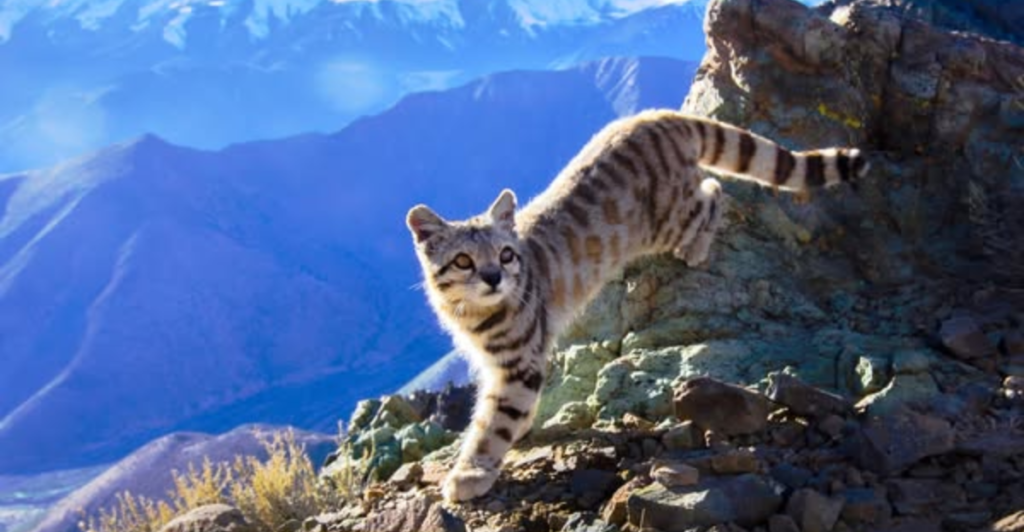
The Andean Mountain cat is a rare and elusive species that lives in extreme conditions at altitudes of 3,000 to nearly 5,000 meters up in the Andes. They have a gray coat and bushy tail adapted to keep them warm in the cold mountains.
These cats weigh between 8 and 12 pounds and have similar proportions to a house cat. They are a rare animal that is hard to spot thanks to their camouflage and shyness. The remote nature of the Andes means that research on the animal is difficult, resulting in them being one of the least researched cats.
Conservationists have noted their vulnerability, as their population isn’t thought to be no more than 1500 individuals left in the wild. The Andean cat feeds on mostly rodents, and it is sensitive to changes in its environment.
Chausie
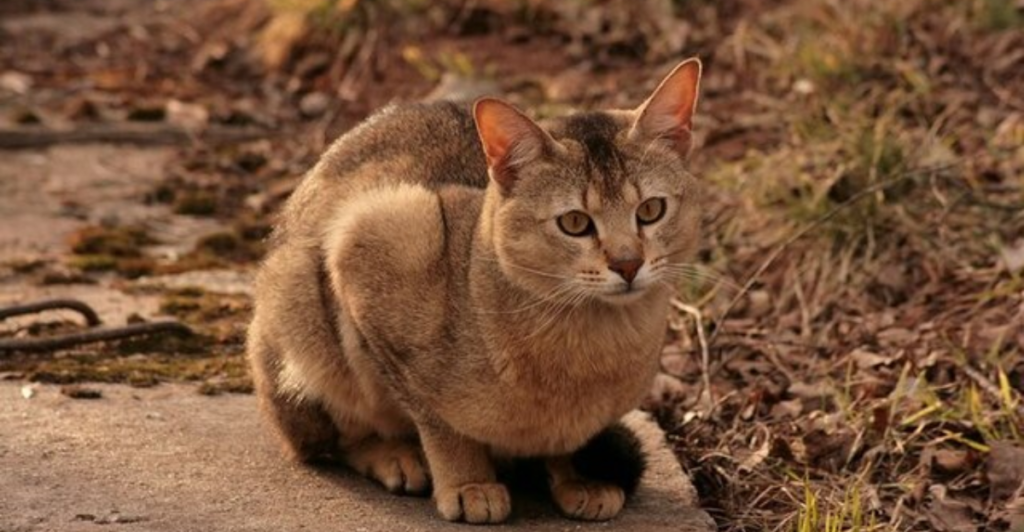
The Chausie is a large cat that is a hybrid species. It is the result of the breeding of the Asian Jungle Cat and domestic felines. These athletic cats look similar to mountain lions but are scaled down significantly. They have a sleek yet muscular body and long legs.
They have a short coat with tabby markings. Their playful nature gives away that they are half-domesticated felines. They only have a lineage with house cats, which means they aren’t entirely domesticated. They are highly intelligent and have been adopted as pets, but their wild nature means that they need a lot of space to roam and may not get along well with other pets.
A Chausie breeder has explained, “Chausies are like having a piece of the wild in your home but with the heart of a house cat.” They love climbing and exploring their environment, meaning that they need a big space to thrive. If owners have the necessary facilities, then these half-wild hybrids allegedly make great pets.
Cheetoh
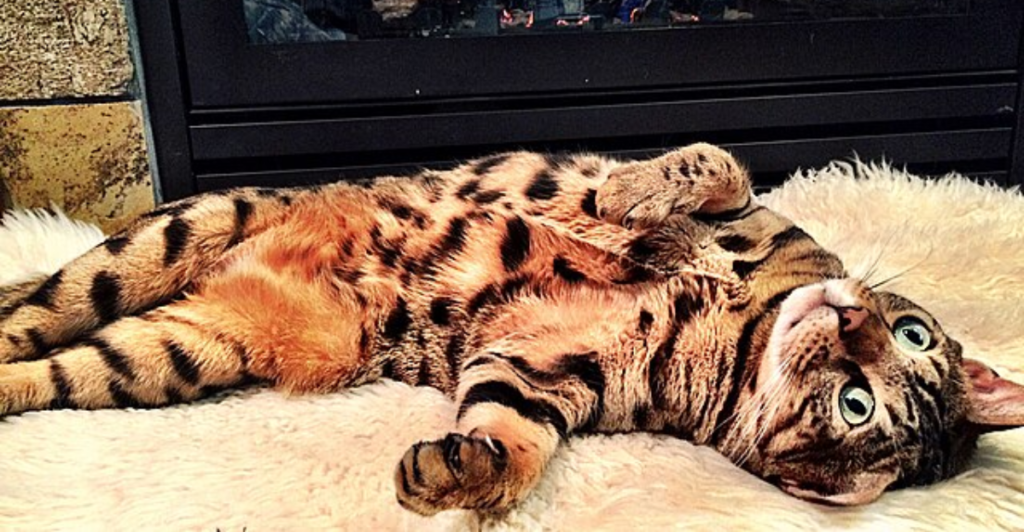
Not to be mistaken with the cheetah, the cheetoh is another hybrid cat species that is a cross between Bengals and Ocicats. They have a wild appearance, but their personality is gentle and affectionate. They love learning new things and interacting with people.
Unlike other cats on this list, the Cheetoh looks like a wild cat, but technically they have no wild DNA, meaning they are great household pets and completely domesticated.
They are social pets that love interacting with everyone in their family. They are a highly sought after breed due to their wild appearance and friendly nature. Cheetohs must be from a reputable breeder, as a wild cat can easily be mistaken for this domestic breed.
Black-Footed Cat
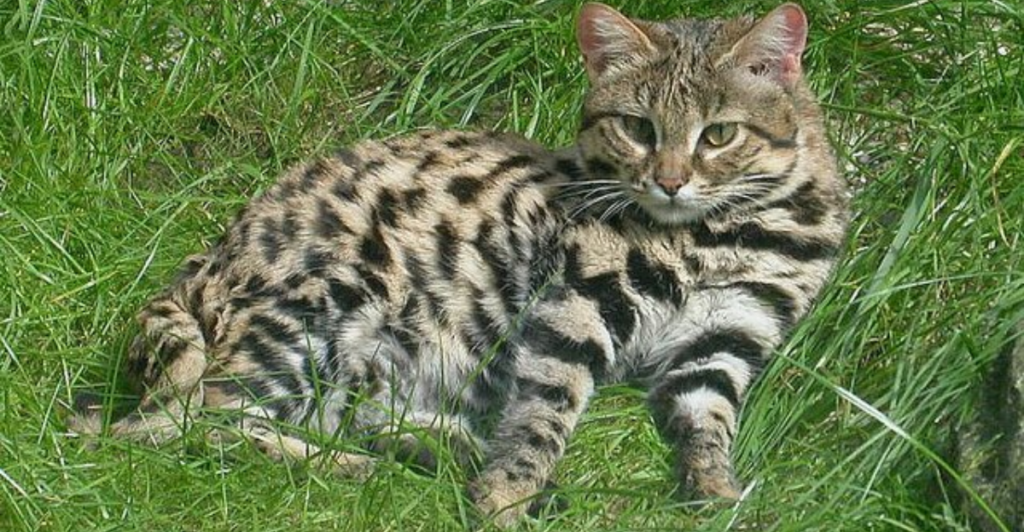
The black-footed cat is a wild species that thrives in the arid regions of southern Africa. They have a sandy coat with dark spots. Their appearance along with their tiny stature at 2-4 pounds mean they can often be mistaken as a domestic kitten. They are the smallest wild cat in Africa, but they are surprisingly good hunters.
The black-footed cat has a reputation for being an amazing hunter, often taking down prey that is much larger than they are. They aren’t spotted often, being nocturnal hunters that can blend into their environment easily.
They have a nickname “anthill tiger” due to their habit of finding abandoned anthills and making a den out of them. Although they are excellent hunters and have great camouflage, they are still threatened by habitat loss and are victims of pest control poisoning.
Sand Cat
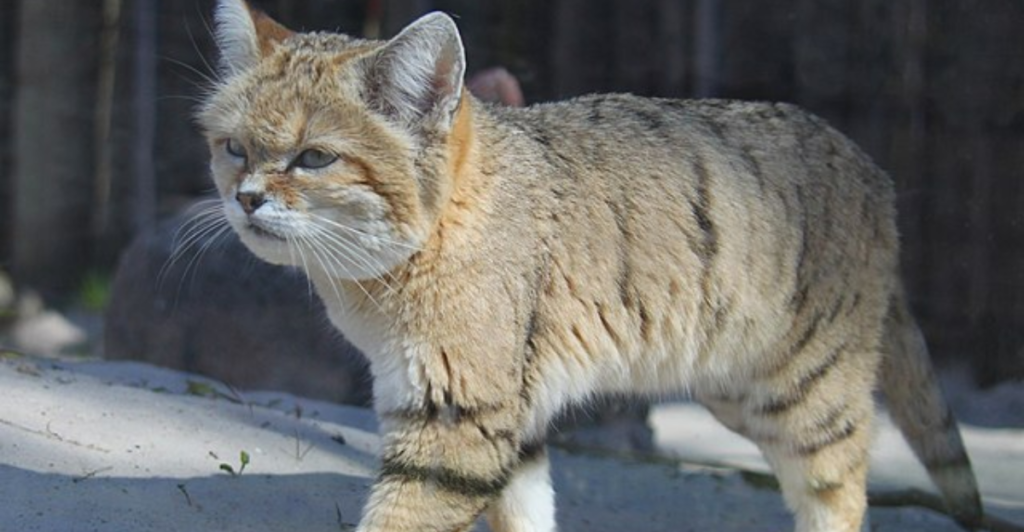
The sand cat, like the black-footed cat, is a desert dwelling wild cat species. They are usually found in the Sahara, Arabian Peninsula, and Central Asia. They have a pale, sandy coat with large ears to allow them to hear over great distances. These features mean they can easily be dismissed as a house cat.
They are perfectly adapted to their desert habitats and have unique survival traits, such as being able to go without drinking water from water sources indefinitely. The species can get all of the water that they need from moisture extracted from their prey.
They are elusive and nocturnal hunters, meaning that not much research has been conducted on them. Their padded paws keep their feet from getting burnt by the scorching sands in their environment.
Geoffroy’s Cat
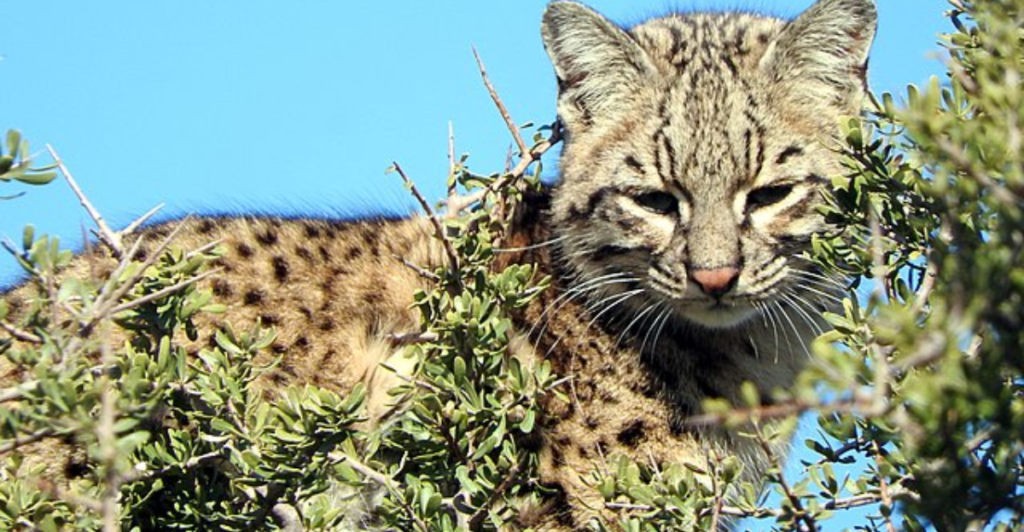
Geoffroy’s cat is a small wild cat that has black spots dotted over a golden or gray coat. They dwell in South America and are around the same size as a house cat at 4-8 pounds. They are adapted to their environment, allowing them to traverse and thrive in forests, grasslands, and wetlands.
These cats have evolved to hunt semi-aquatic, aquatic, and amphibious animals. They are excellent climbers, but they really shine when diving into the water to hunt fish and amphibians. Geoffroy’s cat is a well-adapted species, yet they still face a variety of risk factors.
Their fur is sought after, and they are often hunted due to this fact. They also are facing threats from climate change and habitat destruction. Conservation programs are trying to stabilize their population, and the hopes are that they can recover.
Pallas’s Cat
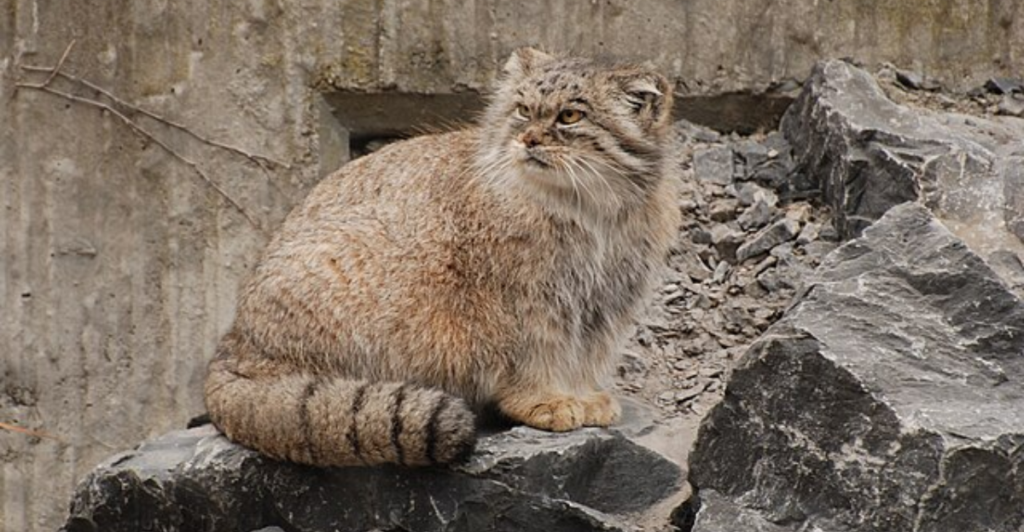
Pallas’s cat, or the manul, is a small but stocky wild cat that inhabits the steppes and mountains of Central Asia. They have a thick, gray coat and a flat face that gives them an iconic look. They are solitary felines that are highly territorial and spend a lot of time exploring rock crevices and burrows.
These cats feed mostly on small mammals and birds and stalk their prey by hiding in tall grass to hide themselves. They are adapted to the extreme cold in the mountains and are relatively elusive to both natural predators and researchers alike.
Pallas’s cat, like many other wild cats, are threatened due to habitat loss and hunting. Habitat protection, as well as mitigating human conflict with this species is the main focus of wildlife conservation.
Explore more of our trending stories and hit Follow to keep them coming to your feed!

Don’t miss out on more stories like this! Hit the Follow button at the top of this article to stay updated with the latest news. Share your thoughts in the comments—we’d love to hear from you!







